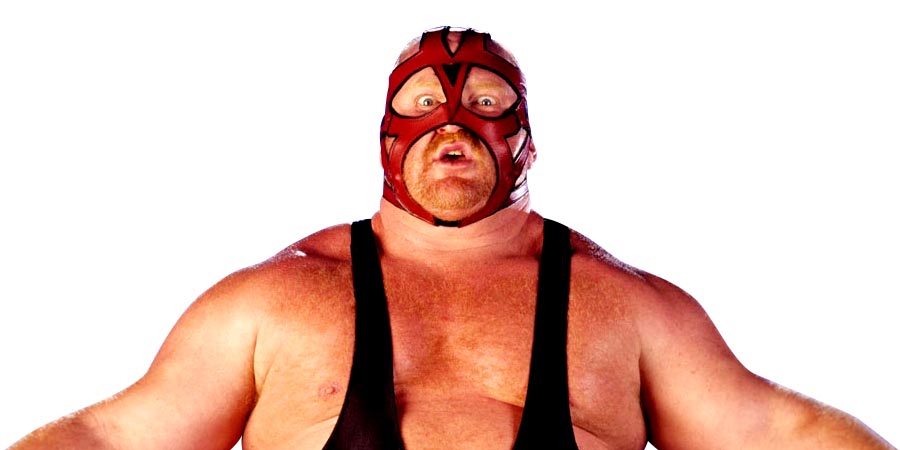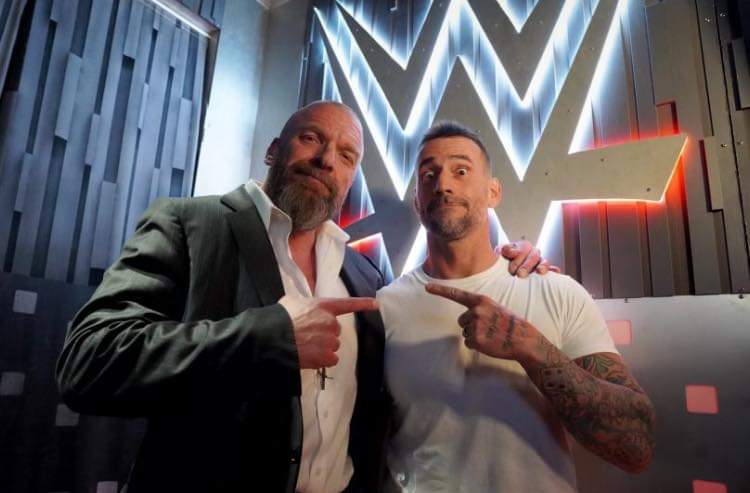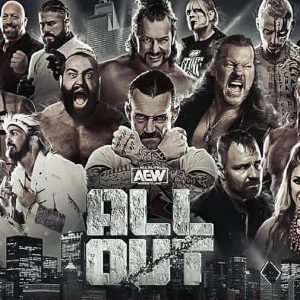Vader Will Forever Be The Best Big Man In Wrestling History
5 min read
A good friend of mine once said “You know, Vader was Brock Lesnar, before Brock Lesnar.” It took me a while to really grasp onto the gravity of that statement, but I realize now that he was on to something. At the height of his career, Vader redefined what being a “big man” meant in the world of professional wrestling. Not only did Vader work a more power based, rugged style, he also showed unheard of agility for his time. A super heavyweight that moved like a junior heavyweight. A mountain of a man, that moved as lightly on his feet as the clouds through the sky.
Leon Allen White was always an exceptionally gifted athlete. He excelled in professional football and rode those talents all the way to the NFL. He was drafted by the Los Angeles Rams, where he played center, but injuries on the field forced him into an early retirement. During his retirement from football, White found himself drawn to the world of professional wrestling. He got his start in several smaller territories, wrestling initially under the moniker Leon “Baby Bull” White. His talent in the ring was undeniable, as he won several championships early in his career. Although he was crowned champion several times, he was missing one very important facet. One that he wouldn’t find until arriving on the scene in New Japan Pro Wrestling.
Once White got to New Japan, he would undergo the most important transition of his career. It’s in New Japan that White would transform in Big Van Vader, a big, imposing bad ass that would forever change the landscape of pro wrestling. In his first major act, he challenged and defeated an already beat down Antonio Inoki, causing the Japanese fans to riot. This resulted in the sumo hall the event was held in to ban NJPW from holding events there. Thus, the legend of Vader was born. Vader would go on to establish himself as a dominant performer. Earning victory after victory, culminating in him winning the IWGP Heavyweight Title in an eight-man tournament. The win would make him the first ever non-Japanese wrestler to hold the title.
He would go on to lose the title after only a month-long reign, but he would hold the title two more times. During his stint in New Japan, Vader began to build a reputation as a stiff worker, and he had a series of insane matches with another notorious hard hitter, Stan Hansen. The biggest highlight from Vader and Hansen’s insanely intense rivalry happened during an All Japan Vs New Japan Supershow. Vader was scheduled to face Hansen in a title match, and things got off to a bad start almost immediately. Hansen carried a bullrope with him, and this time he swung it at Vader, and it connected. The blow smashed Vader’s nose and disoriented him, but Vader continued on in the match. Vader and Hansen then exchanged several heavy blows, until Hansen caught Vader with a thumb to the eye. The thumb popped Vader’s eye out of the socket, resulting in one of the most brutal scenes in wrestling history. In true Vader fashion, he popped the eye back into the socket and finished the match.
 It was also during this time that NJPW and WCW had reached an agreement to run co-branded shows which helped facilitate Vader’s eventual full-time transition to WCW. It was in WCW that Vader would begin a program with a wrestler that I personally think was his fiercest adversary, Sting. Vader and Sting had a series of matches that rival the competitiveness of Austin Vs Rock, Or Flair Vs Rhodes. They traded wins and loses in matches that quite frankly, brought out the best in both men. The rivalry between Sting and Vader helped make Sting an even bigger star, and made Vader himself look like an even more imposing being than anyone else before him. Two of Vader’s three World Heavyweight Title victories would come against Sting, and none of his other programs were as meaningful.
It was also during this time that NJPW and WCW had reached an agreement to run co-branded shows which helped facilitate Vader’s eventual full-time transition to WCW. It was in WCW that Vader would begin a program with a wrestler that I personally think was his fiercest adversary, Sting. Vader and Sting had a series of matches that rival the competitiveness of Austin Vs Rock, Or Flair Vs Rhodes. They traded wins and loses in matches that quite frankly, brought out the best in both men. The rivalry between Sting and Vader helped make Sting an even bigger star, and made Vader himself look like an even more imposing being than anyone else before him. Two of Vader’s three World Heavyweight Title victories would come against Sting, and none of his other programs were as meaningful.
After Vader and Sting were done feuding, Vader floated around the main event scene, feuding with Ric Flair, Mick Foley (as Cactus Jack), Davey Boy Smith, and eventually Hulk Hogan. The feud with Hogan would go on to spell the end of his time in WCW, and essentially the end of the greatest part of his career.
Vader would be released from WCW, and eventually picked up by the WWF. Vader was brought in to become the monster heel that the WWF desperately needed at the time, but he never panned out to fill that role. While Vader did sniff the main event scene, the influence of Shawn Michaels, combined with the existence of Bret Hart, Yokozuna, and a young upstart named Stone Cold Steve Austin made sure Vader never held the WWF Title. Even though he wasn’t the same man he was in NJPW or WCW, Vader still could’ve been just as big of a draw if given a chance. Vader feuded with Undertaker, then with Goldust before being relegated to the role of a jobber. Vader would eventually negotiate a release from his contract, but at that point it was official: Vader Time was over.
Vader would go on to make several appearances across the indies, and even made a stop in TNA briefly. His most recent ring action saw him face off against Will Ospreay in a winning effort at a Revolution Pro Wrestling show. Vader fought off several health issues, including a heart condition. He would eventually succumb to pneumonia, passing away at 63 years old.
Despite the latter years of his career being a complete 180 from his early years, there’s no denying the impact Vader had on the industry. His unspeakable athleticism, raw power, and underrated promo skills will forever make him one of the greats in the industry. He’s often cited as an inspiration for every big man that’s followed him, including The Big Show, Mark Henry, and the latest great big man, Braun Strowman. He’s earned his place amongst the best big men in the business, and I happen to think he’s the greatest of them all.







